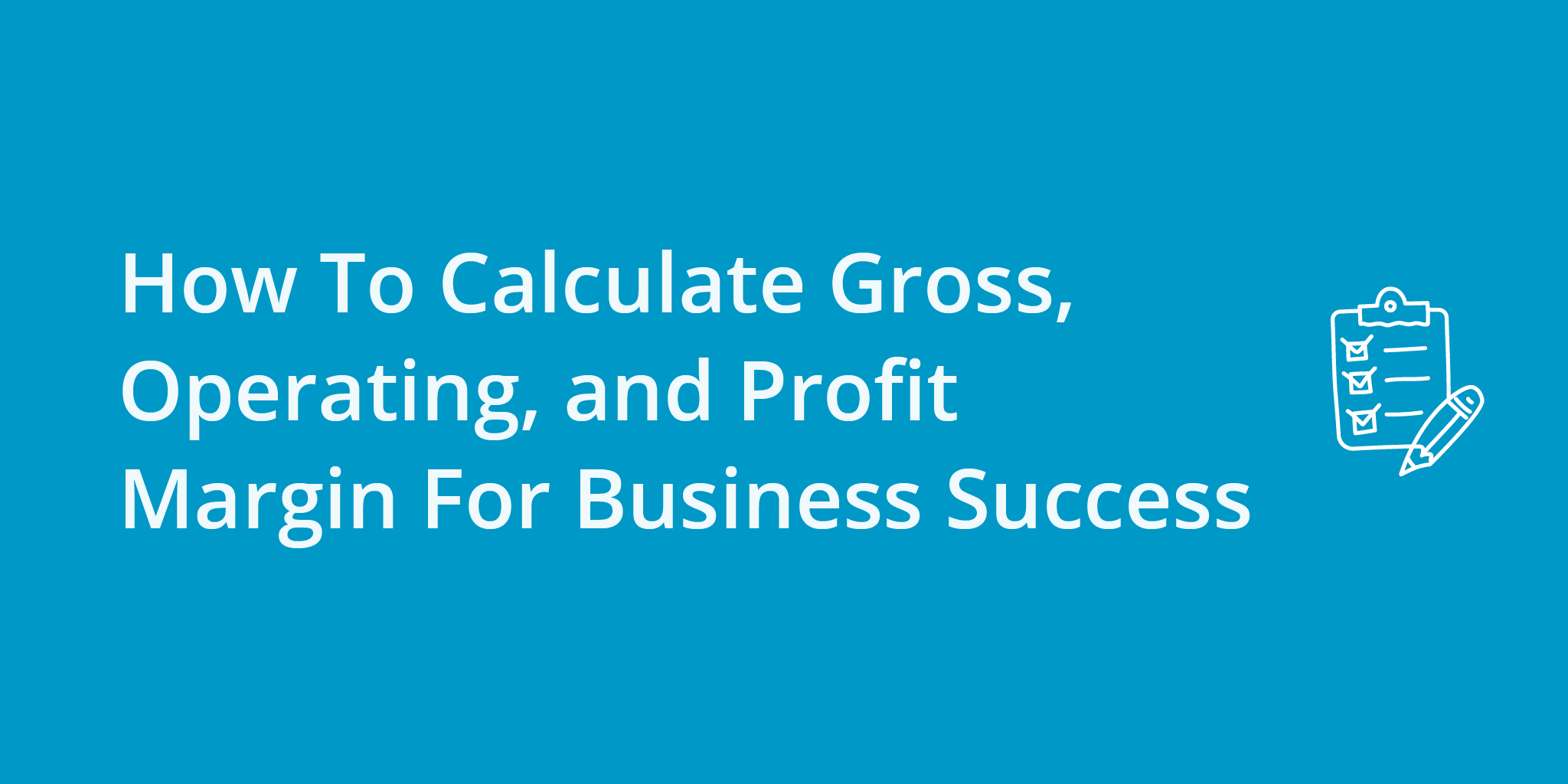When considering how to measure the financial stability of your company, many metrics are available. It can be difficult and a bit confusing to decide which metric to use in your organization.
By taking a look at your company’s financial statements and running some quick calculations, you’ll soon be on your way to knowing which metric will help your business succeed.
In this article, we’ll take a look at some of the most popular business performance metrics. We’ll discuss operating profit margin, gross margin, profit margin, and EBIT margin – and how they compare to one another.
- What is Operating Profit Margin (OPM)?
- How to Calculate Operating Profit Margin
- What’s the Difference Between Gross Margin and Operating Margin?
- EBIT vs. Gross Margin
- Profit Margin vs. Operating Margin
What is Operating Profit Margin (OPM)?
Operating profit margin is often referred to as simply OPM. It is a financial metric that measures a company’s profitability and efficiency in generating profits from its core operations. It provides insight into how well a company is managing costs and generating profit from its primary business activities.
To calculate the operating profit margin, we need two key components: operating profit and net sales. Operating profit is also known as EBIT (earnings before interest and taxes). It is the difference between a company’s total revenue from its operations and its operating expenses. It represents the profit generated before considering interest, taxes, and non-operating income or expenses.
Net sales, on the other hand, represent a company’s total sales revenue after deducting any returns, discounts, or allowances.

How to Calculate Operating Profit Margin
The formula to calculate the operating profit margin is quite straightforward. We divide the operating profit by the net sales and multiply by 100 to express it as a percentage. Have a look at your company’s income statement or financial statements, then use the formula:
Operating Profit Margin = (Operating Profit / Net Sales) x 100
The resulting percentage gives us the operating profit margin.
This represents the percentage of each dollar of sales revenue that the company retains as operating profit. In other words, it tells us how efficiently a company is converting its sales into profits.
A higher operating profit margin generally indicates that a company is effectively managing its costs, pricing its products or services, and operating well. It suggests that the company has a higher potential for generating profits from its core operations.
Conversely, a lower operating profit margin may indicate challenges in controlling costs or pricing strategies that are impacting profitability.
OPM is a critical metric for businesses because it provides valuable insights into their financial health and operational efficiency. It helps company leaders, sales and marketing professionals, and investors evaluate the profitability of a business and compare it with industry peers.
By monitoring and analyzing OPM over time, companies can identify areas for improvement, optimize their operations, and make informed decisions to enhance profitability.
What’s the Difference Between Gross Margin and Operating Margin?
Understanding the difference between operating margin vs. gross margin is essential in analyzing a company’s financial performance. We break down gross vs operating margin below:
Gross Margin
Gross margin is a financial metric that measures the profitability of a company’s core operations, specifically its ability to generate revenue after accounting for the direct costs associated with producing or delivering its products or services. It’s usually expressed as a percentage.
To caluculate gross margin, begin by subtracting the costs of goods sold (COGS) from net sales revenue. This number is known as the organization’s gross profit (a dollar amount).
The formula to calculate gross margin is as follows:
Gross Margin = (Net Sales – Cost of Goods Sold) / Net Sales * 100
Gross margin provides insights into how efficiently a company manages its production or service costs. It helps determine whether a company is pricing its products appropriately or if there are opportunities to optimize production processes or negotiate better deals with suppliers.
Operating Margin
Operating margin, also known as gross operating profit margin or operating income margin, measures a company’s profitability from its core business operations, including not only the cost of goods sold but also operating expenses and fixed costs such as salaries, rent, utilities, marketing expenses, and other costs directly related to running the business.
The formula to calculate operating margin is as follows:
Operating Margin = (Operating Income / Net Sales) * 100
Operating margin takes into account both the revenue and the various operating expenses incurred in generating that revenue. It provides a more comprehensive view of a company’s operational efficiency and profitability compared to gross margin.
It reflects how effectively a company manages its costs across all aspects of its operations, including sales, marketing, administration, and other operational expenses.
In summary, the key difference between gross margin versus operating margin lies in the scope of costs they consider. Gross margin focuses only on the direct costs of producing or delivering goods or services, while gross operating margin incorporates all operating expenses associated with running the business.
Both gross margin and operating gross margin are important metrics for evaluating a company’s financial performance. They provide different perspectives on profitability and efficiency.
Analyzing these margins helps businesses identify areas of strength or weakness, make informed decisions regarding pricing, cost management, and resource allocation, and benchmark their performance against industry peers.

EBIT vs. Gross Margin
While they mean the same thing, some financial analysts prefer the term EBIT (Earnings Before Interest and Taxes) over operating profit. Sometimes EBIT is even lengthened to include depreciation and amortization, to create the acronym EBITDA.
Gross margin, as we discussed earlier, measures the profitability of a company’s core operations by considering the direct costs associated with producing or delivering its products or services. It represents the difference between net sales revenue and the cost of goods sold (COGS).
EBITDA (Earnings Before Interest , Taxes, Depreciation and Amortization)
EBITDA, also known as operating profit, is a financial metric that represents a company’s earnings before deducting interest and taxes, and accounting for depreciation and amortization.
It provides a measure of profitability that focuses on the core operating performance of a company, excluding the effects of interest and tax obligations.
EBIT = Revenue – Operating Expenses (excluding interest and taxes)
To calculate EBIT margin, simply divide EBIT by revenue:
EBIT Margin = EBIT / Revenue
EBIT reflects the profitability generated from a company’s primary business operations. It allows for a comparison of the profitability between different companies, regardless of their capital structure or tax obligations. EBIT is particularly useful for comparing the operational performance of companies operating in different tax jurisdictions or with varying financial leverage.
The key difference between EBIT margin vs. gross margin is the inclusion of operating expenses beyond the cost of goods sold. Gross margin considers only direct production costs, while EBIT considers all operating expenses, such as salaries, rent, utilities, marketing expenses, and other costs directly related to running the business.
Profit Margin vs. Operating Margin
Let’s take a look at another metric that is used to assess the financial health of an organization: profit margin. Profit margin, also known as net profit margin or net income margin, measures the percentage of revenue that a company retains as profit after deducting all expenses, including operating expenses, interest expenses, taxes, and other non-operating costs.
The formula to calculate profit margin is as follows:
Profit Margin = (Net Income / Net Sales) * 100
Profit margin reflects the overall profitability of a company’s operations, taking into account all expenses incurred in generating revenue. It represents the proportion of each dollar of sales revenue that remains as net income.
Profit margin is a comprehensive measure of a company’s financial performance and takes into account all income and expenses, including non-operating items.
The key difference between operating margin vs. profit margin lies in the expenses they consider. Profit margin includes all expenses, both operating and non-operating, while operating margin focuses only on operating expenses.
Operating margin provides a more specific view of a company’s operational efficiency and profitability by isolating the impact of core operational activities.
If you found this article helpful, we recommend taking a look at our other articles, such as:
Everything You Need to Know to Cold Call Legally



